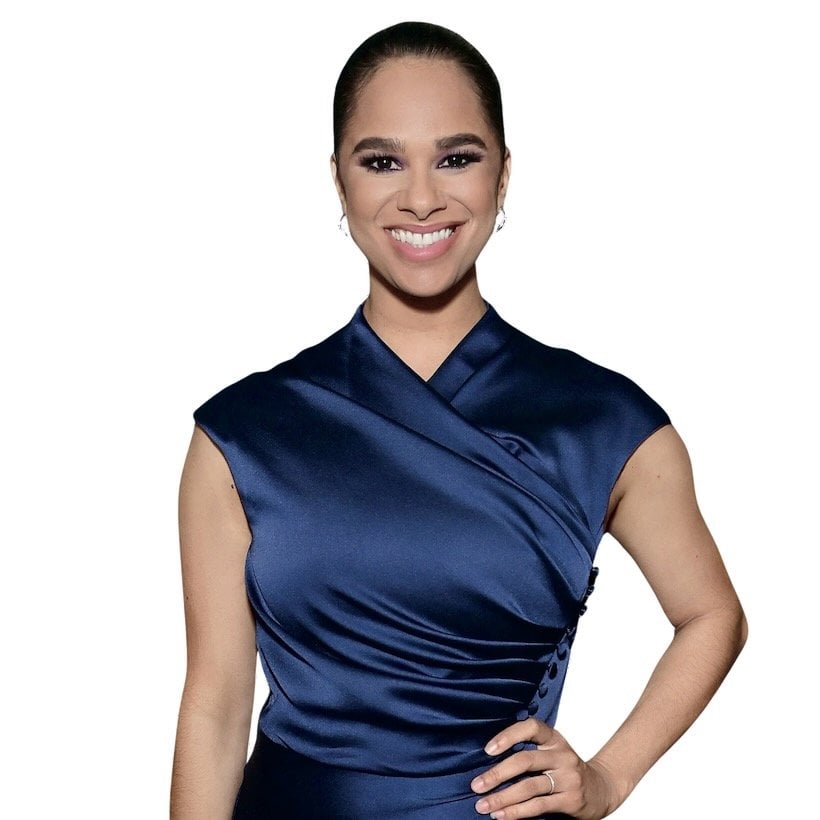
The Smithsonian is not only a treasure trove of ancient artifacts but a monument to history that has been made before our eyes. It holds boxing gloves worn by Muhammad Ali, the Nike “Equality” sneakers worn by Lebron James, and Misty Copeland’s ballet shoes—stained and worn, caked in dark makeup.

In 2015, Copeland made history when she became the first Black principal dancer at the American Ballet Theater (ABT) since its founding in 1939, changing the face of ballet. She has since turned her attention to the shoes.
For years, Copeland and other dancers of color have had no choice but to wear ballet slippers in their standard issue shade, “European Pink.” With skin tones so far from the pale, baby-pink hue, these dancers resort to something called pancaking—painting their shoes with makeup to match their complexions.
Classical ballet depends on long, elegant lines, from the top of the head to the tip of the toes. On dark skin, European Pink creates a harsh color-block effect that disrupts the mandated throughline. This aesthetic continuity is so fundamental to ballet that the lack of necessary equipment—and representation—for some is inherently exclusionary.
Copeland went viral this past November when she made a TikTok showing the pancaking process. “[Not having] the option to have pointe shoes or ballet slippers in my color has often made me feel excluded,” Copeland said in the video. “That’s why I’ve started this petition at change.org to give more options for the pointe shoe emoji—more color options—because this is so much bigger than an emoji. This is so much deeper. It’s about making dance and ballet more inclusive.”
Copeland’s petition urges Apple and Unicode, which creates and regulates emojis, to introduce a spectrum of shades for the pointe shoe icon. At the time of writing, the petition had almost 53,000 signatures.
As a bestselling author, founder, producer, actor, and activist, her most recent petition is the latest project in a long line of Copeland’s calls for change.
The 2023 short film “Flower” is the first work by Copeland’s production company, Life in Motion—which she co-founded with her friend from ABT, Leyla Fayyaz. Copeland stars in the silent movie, which serves as an homage to the Black silent films of the 1920s and explores intergenerational relationships and the housing crisis in the San Francisco Bay Area through dance. The work highlights the necessity of finding strength in community in the face of systemic injustice.
Her memoir, published in 2022 and titled The Wind at My Back, tells the story of Copeland’s quest for community when she was elevated to soloist at ABT. She found it in Raven Wilkinson. Copeland’s treasured mentor, who died in 2018 at her home in New York City, is renowned for the trailblazing achievement of becoming the first Black woman to dance full-time with the Ballet Russe de Monte Carlo in the 1950s and 60s. The memoir tells the story of how these two women found one another and changed the world of ballet by opening doors for dancers of color to follow. When I asked Copeland about her other inspirations, she cited Arthur Mitchell, the founder of Dance Theatre of Harlem and the first Black principal dancer at the New York City Ballet. “Even with creating my foundation, I’m like, oh this is Mr. Mitchell in me, wanting to do this work and give back to the community,” she said.
Founding her non-profit, The Misty Copeland Foundation, in 2021, the prima ballerina developed the “Be Bold” program. Partnered with the Kips Bay Boys & Girls Club and the Madison Square Boys & Girls Club in New York City, the free afterschool initiative aims to make dance affordable, accessible, and fun. They meet twice weekly for 12 weeks across 15 different community sites and have reached approximately 500 children.
Copeland was inducted into the club’s National Hall of Fame in 2012, and her own experience growing up at the San Pedro, CA branch inspired her partnership with the organization. According to her foundation, 25 million children would be enrolled in an afterschool program if it were available to them, and children of color disproportionately represent the unmet demand. “I never otherwise would have had anything to do with ballet, had someone not come into my community and given me an opportunity to see if this was something I could do,” Copeland said. Combating systemic issues through community and dance, Copeland has forged an elegant throughline connecting her non-profit work to her memoir to her film—and it is so much deeper than an emoji.
From starring in the viral Under Armour campaign titled “I Will What I Want,” to performing with late superstar Prince during his “Welcome 2 America” tour, Copeland’s skill launched her into the public eye, making her a household name that extended beyond the world of classical ballet. She has used her status as the world’s most famous prima ballerina to guide the next generation of dancers of color, ensuring they have the type of support that was so crucial to her own success.


